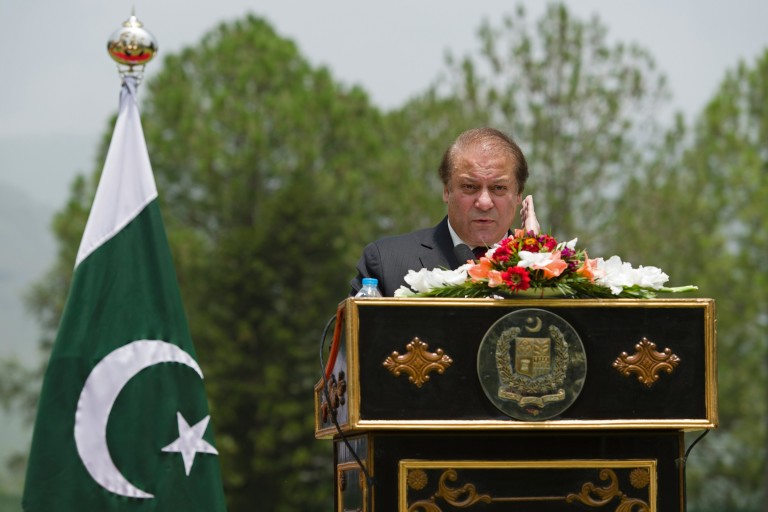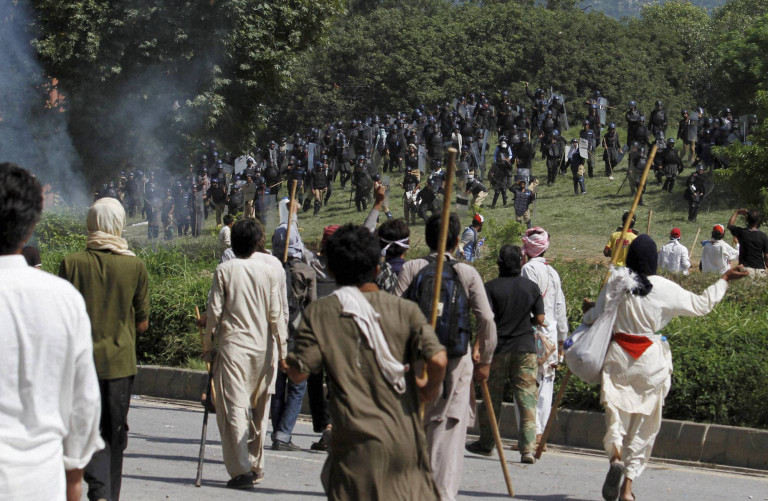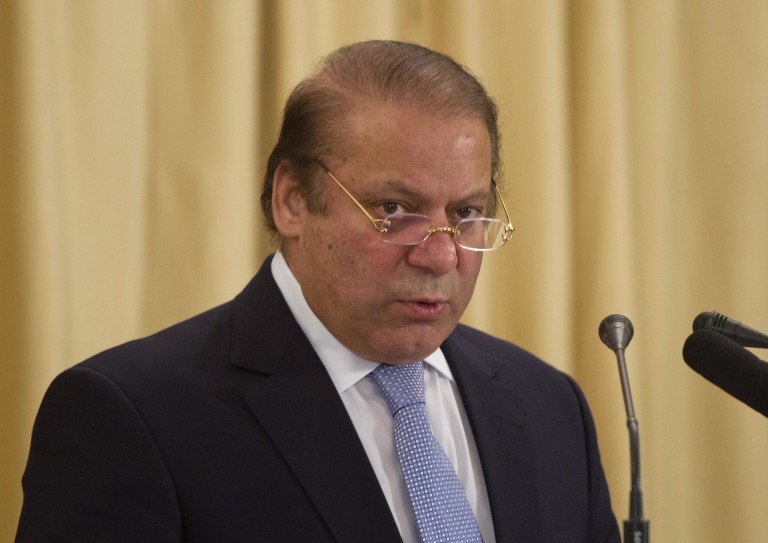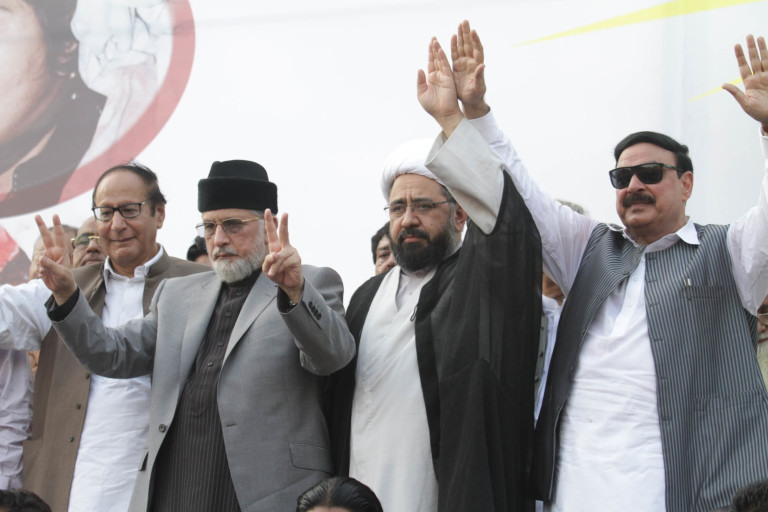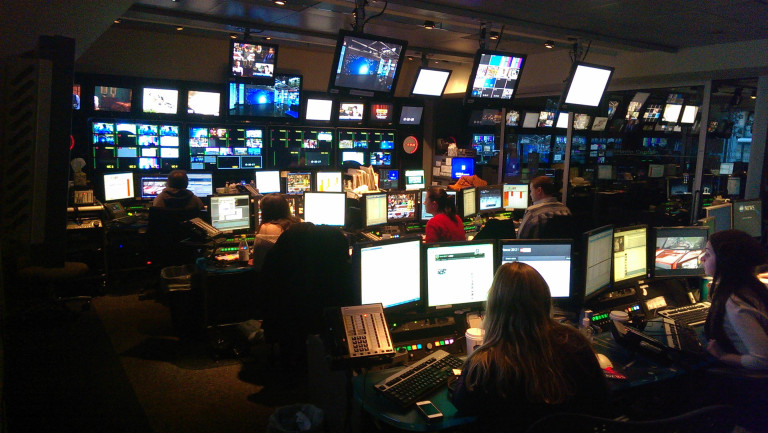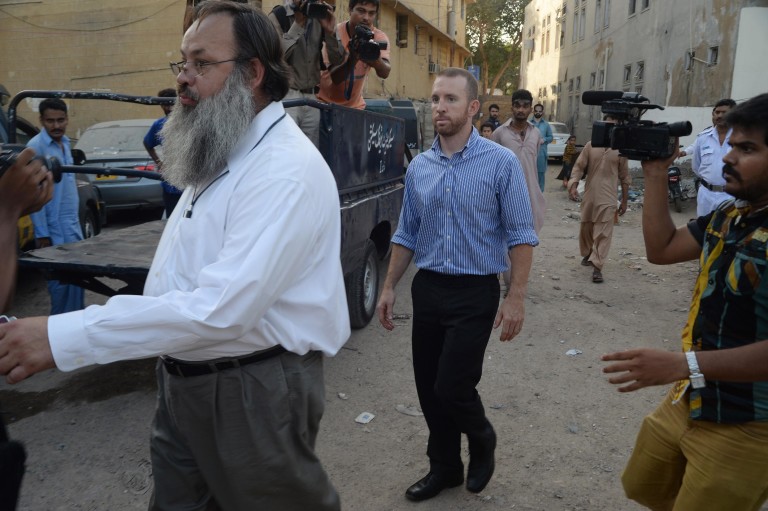Moeed Pirzada |Pakistan Today|
Whereas the Model Town tragedy of June 17 – where Punjab police ended up killing at least 14 innocent men and women – has filled the media space with the news of an uninspiring judicial commission and strange political alliances (APC of June 29) the real questions at the core of this administrative fiasco have not been addressed – not so far.
The questions to be asked by a genuinely empowered Supreme Court Commission, by political opposition, by civil society, by cerebrally viable sections of civil services (whatever remnants are left) print and electronic media, think tanks (that can think), NGOs, development community, diplomatic stake holders and people at large are: Do we have in Pakistan an ‘operationally independent police’? Do we now even understand what it is supposed to mean? Can there be a democracy without an ‘operationally independent police’? Can there be a civilian ascendancy in a country like Pakistan without first designing a police that operates in public interest within the confines of law and constitution?
This second part is least understood. Only a professionally autonomous police operating within the framework of democratic constitution and regulatory powers; a police that is not seen to be subservient to the political needs of ruling parties and families can provide a space in which “free, fair and transparent elections” can be held and “non-violent resistance” is possible by myriad opponents of a regime. Without the genuine presence of such a space, opponents will seek help elsewhere including beyond the borders; in Pakistan they will soon land at the doorsteps of a better armed, organised and ambitious force: the army.
So, forget about the purposefully used dishonest expression “meaningful democracy”; question is could there be “democracy” when police forces don’t have a professional mind or conscience of their own? Can there be a democracy when police have become mere extensions of the political parties in power – like apparatchiks of communist parties or like Cossack troopers of Russian Czars – and when political parties themselves are nothing more than collection of few powerful families?
Today Ch Pervaiz Elahi is sitting next to Dr Tahir-ul-Qadri in the APC, demanding resignations of chief minister Punjab. He argues that as ex-chief minister Punjab he knows that police could not have done all that violence, that level of brutality, without clear instructions or nod from the top, ie from the chief minister himself. Maybe Pervaiz Elahi is right; because it is widely believed that before and after the elections of 2002 he was the principal villain that worked to undermine the concept of an operationally independent police force as enshrined in the Police Order 2002.
Research by United Nations and other independent bodies affirm that Police Order 2002, in Pakistan, was the most ambitious effort attempted anywhere in South Asia within the past 140 years to conceive an operationally independent, community based police force accountable within multiple levels. It is said that it was Pervaiz Elahi and his political supporters that conspired to bring police back under political stranglehold in the name of supervision. His successors – after 2008 elections, both PML-N in Punjab and PPP in Sindh – hated him but nevertheless they obediently carried his mission; by totally obliterating whatever Pakistan had gained in terms of local governments and modern policing. Mao had argued that all power flows from the barrel of a gun; Pakistan’s constituency politics, pillar of its democracy, revolves around control of police and its guns. To win elections you need a subservient or friendly police, after elections you consolidate your power through your hold on police. People fondly watch Turkish soap, “Mera Sultan” where mistresses and concubines dance for the favours of an Ottoman Sultan. In the harem of Pakistani politics, politicians of all sides fight for “mera thanedar” and “mera SP” (my SHO and my Superintendent Police).
Research by United Nations and other independent bodies affirm that Police Order 2002, in Pakistan, was the most ambitious effort attempted anywhere in South Asia within the past 140 years to conceive an operationally independent, community based police force accountable within multiple levels. Together with the Local Government Act of 2001, the Police Order was an attempt to place police in the context of community needs, human rights, minority protections and gender sensitivity. Regulatory powers of the deputy commissioners were given to the elected Nazims, judicial functions to the district session judges and policing responsibilities to the district police officers (DPO).
In the administrative system that had started to breathe as a neonate in 2001-2, political bosses could set overall goals and give broad directions but were prevented from day to day micromanagement of police actions. Attempts were made to limit politician’s ability to control police by creating security of tenure for police officers and checks were placed on arbitrary use of executive authority by politicians and senior bureaucrats working on their behalf by bringing in the concept of public safety boards at the national, provincial and district levels. Sudden transfers and postings of police officers were not possible without the concurrence of public safety boards; safety boards were to consist of equal number of parliamentarians from treasury and opposition benches. Half the members of these boards were non-politicians from community or civil society. The very fact that political elite and bureaucracy got united to extinguish this policing system in its infancy speaks volumes about the nature and direction of political change in Pakistan.
Let’s come back and apply our lens to what happened in Model Town and what follows from it. Few people, if any, have faith in the working of the one man judicial commission in Lahore, especially when victims have boycotted it leaving it with only one version to investigate; most expect the commission to come up with obfuscations instead of clear answers. It is seen at best a time tested mechanism to pacify feelings and to provide space for political settlements; for instance a government that set the stage for killings on the pretext of removing barriers has since then permitted these barriers. But the issues thrown up by the Model Town fiasco are bigger than the fate of Dr Tahirul Qadri’s revolution, Pervaiz Elahi’s ambitions, Imran Khan’s tsunami and Shahbaz Sahrif’s mantra of progress or the musical chairs of power politics they and their supporters may like to play amongst themselves. Questions are: How and on what considerations we make decisions in a system of power we cleverly sell to the west as democracy? Can we be defined as a democracy without an operationally independent police? For how long this system of control and deceit can continue?
Hypothetically speaking, if there were a carefully selected Supreme Court Commission then the most important enquiries it will launch will be into the nature of those high level meetings that took place between June 13 and 16 – some of them attended by Rana Sana Ullah, but not all. Yes, the series of meetings held in Rawalpindi and Lahore, at 7 Club Road and at Civil Secretariat. What was the nature of the crisis that demanded so many meetings; involving amongst others: Chief Secretary Punjab, IGP Islamabad, Regional Police Officers (RPOs) from all Punjab, top executives from NADRA, HEC, Intelligence Bureau and FIA, etc? Was this a national crisis or all organs of administrative system were assembled to manage what could at best be defined as a political challenge for the ruling party? Were minutes kept of these meetings? And if minutes were not kept then why not?
Hypothetically speaking, if there were a carefully selected Supreme Court Commission then the most important enquiries it will launch will be into the nature of those high level meetings that took place between June 13 and 16 – some of them attended by Rana Sana Ullah, but not all.
If minutes are not available – which is surely a scandal in itself – then participants of those meetings should be called in front of a commission to explain the proceedings, the arguments, the counter-arguments given by different sides. This is the single most important exercise that needs to be done. Because it was here in these meetings decisions were taken that set the stage for subsequent police action in Model Town. Also, a Supreme Court Commission will need to carefully examine the Lahore High Court proceedings, petitions, arguments and admissions by police, interim orders (between Jan19 and May 2011) on the application of Tehrik-e-Minhajul Quran asking police to provide them security against terrorism. Especially important is the letter of Instructions which Model town police itself had written to Minhaj-ul-Quran in April 2011 that recommended actions like large number of armed guards, several security check points around premises for vehicles, CCTV cameras, and so on.
Now If Commissioner Lahore or Model Town Police in 2014 had made a professional determination that barriers violate the initial understanding of April/May 2011 then did they initiate any official correspondence on this? Was Minhaj-ul-Quran served notices? Late at night on June 16, SP Model town who was trying to remove these barriers had little idea of what he was doing and why? He was merely taking orders from DCO, and DCO from above? Only a high powered Supreme Court Commission may be able to find out who was above whom in the long chain of command that was determined to create a violent scene and how all that was related to the meeting between June 13 and 16. And finally the Commission may like to know that on whose “professional determination” these barriers have now been restored; what changed in terms of public or administrative considerations?
Why these details, the nitty-gritty, are important? Because once you examine the sequence of events, and the political context that prevailed in the country (with the expected arrival of government’s perceived arch enemy: Dr Qadri) you have to be exceptionally dumb – IQ below 30 – not to realise that police were helpless victims of a government’s self-serving political brinkmanship. Politicians, media, civil society bureaucrats and judiciary all have learnt to dump the failings of a system on the police. It’s police that is made to look odious, vile, cruel and criminal. But police, however frightening they may look with their rough looks, uniforms and guns, are not powerful in the system. They are not the decision makers; they are mere pawns in the hands of politicians and senior civil servants.
As a symptom of the misguided debate, even civil society pundits and think tanks keep on debating reforms of police in individual districts, as if more computers, training to shoot and learning to respect women can make much difference. The fundamental challenge we face is: de-politicisation of police and this is a battle we have to fight in Islamabad, Lahore, Karachi and Peshawar.
It will be a disaster of mammoth proportions if even if after “Model Town Tragedy” these questions are still not addressed and debated. If we – the politicians, civil society, media and the judiciary – didn’t fight for an “operationally independent police” then the future of Pakistan either lies with draconian martial laws or with the kind of chaos the world is witnessing in the images that pour from Bashar-al-Asad’s Syria and Nouri-al-Maliki’s Iraq. Any third scenario is a wishful fantasy.
